This article was medically reviewed by Jonas DeMuro, MD. Dr. DeMuro is a board certified Pediatric Critical Care Surgeon in New York. He received his MD from Stony Brook University School of Medicine in 1996. He completed his fellowship in Surgical Critical Care at North Shore-Long Island Jewish Health System and was a previous American College of Surgeons (ACS) Fellow.
There are 12 references cited in this article, which can be found at the bottom of the page.
This article has been viewed 129,420 times.
Experts agree that a broken bone requires emergency medical care, especially for an open fracture.[1] An open fracture occurs when part of the broken bone pierces the skin or a foreign object penetrates the bone.[2] An open fracture can be a scary injury, but a doctor can set the bone and clean the wound, which can help prevent an infection. After you call for medical help, researchers say you should provide first aid by keeping the person immobilized, fighting blood loss, and helping the person stay calm.[3]
Steps
Responding Quickly to an Open Fracture
-
1Call for emergency services immediately. An open fracture has a high rate of infection and the possibility of other serious bodily trauma. The quicker you get medical care, the less chance of the wound becoming infected. Call 911 or assign a specific person to make the call while you begin treatment.[4]
-
2Ask the injured person how he was injured. If you didn’t see the accident happen, you’ll want to get a quick history from the person as soon as possible. Do this while you’re gathering what you need to treat the wound and calling emergency services. Depending upon how much blood is lost, or if the person becomes unconscious, you may be the one telling emergency personnel how the accident happened. Emergency personnel will want to know:
- How the bone was broken: from a fall, car accident, blow, during a sporting event?
- What the wound looked like immediately after the accident and if it continued to get larger?
- How much blood was lost?
- If the person required treatment for shock?
Advertisement -
3Determine where the open wound is and if bone is protruding from the skin. This does not mean you should touch the wound; just look at it. If the open wound is caused by a penetrating foreign object or if the wound is caused by the sharp edges of bone opening the skin, the treatment can be different. Severity of the wound is variable. There may only be a small opening in the skin without visible bone or the wound may contain an area of bone that is quite large.
- Bone is off-white in color and not necessarily the stark white color found in skeleton models. It is ivory in color, like an elephant's tusk or a tooth.
-
4Do not remove any foreign object penetrating the body. A penetrating wound may have pierced an artery. If you remove the object, the artery may begin to bleed profusely and the person may quickly bleed out and die. Instead, treat the area with the foreign object in place, taking care not to touch or move the object.[5]
-
5Determine if there are other life-threatening injuries to the body. Because of the amount of force needed for an open fracture, there is a 40 to 70% chance of other serious trauma to the body which may be life-threatening.[6] This could include profuse bleeding from the wound.
Providing First Aid Treatment
-
1Assess the situation. Emergency services may not be immediately available if a person is injured on a hiking accident. Emergency personnel may arrive more quickly in a populated area, but it is just as important to apply first aid.
- If you have access to a first aid kit or gloves, make sure you put them on to protect yourself from any blood-borne diseases.
-
2Take a photo of the wound. Use your phone or digital camera to take a photo of the area before moving forward with first aid. Providing an image of the wound for emergency personnel means you may reduce the exposure of the wound to air, as they will have to open the dressings to see the wound.
-
3Cover the wound with a sterile dressing and control the bleeding. If you have sterile dressings available use them to cover the wound and apply pressure to stop the bleeding around the bone.[7] However, if sterile dressings are not available, you may have access to feminine protection pads or urinary incontinence pads. These are cleaner than material found in the vicinity of the accident and will reduce the risk of infection. If these are not available, use white material first, such as a shirt or bedsheets. If all else fails, just use the cleanest material possible.
-
4Create a temporary splint from solid material in the area. Support the area to reduce pain and discomfort for the individual using soft towels, pillows, clothing or blankets.[8] This will help to reduce the potential for shock. If there is nothing available, do not move the person or injured area and wait for emergency personnel to splint the area.
-
5Evaluate and treat for shock. The force of the injury and extent of the trauma may cause the individual to go into shock. This can be life-threatening. Signs of shock include: feeling faint, breathing in short rapids breaths, cold and clammy skin, blue lips, rapid but weak pulse, and anxiety.[9]
- Try to place the individual’s head lower than his trunk. The legs may also be elevated only if they are not injured.[10]
- Make the person as comfortable as possible. Wrap her in a blanket jacket, or anything available to keep her warm.
- Check the person's vital signs. Make sure her pulse and breathing continue to be normal.
Understanding Proper Medical Treatment
-
1Tell emergency personnel what they want to know. The physician in the emergency room will ask for information surrounding the accident, past medical history and any medications the patient may already be taking. Although most open fractures are more obvious, if there is a wound in the area of the fracture, the physician will assume there is an open fracture.[11]
-
2Expect prophylactic treatments, which means that the doctor will try to prevent infection. Before setting the bone or closing the wound, the doctor will start antibiotics and assess whether the patient needs a tetanus booster. If the patient has not had a tetanus booster within five years, one will be given.[12] These measures are used to reduce the risk of infection and promote healing.
- The doctor will start IV antibiotics to cover a broad spectrum of bacteria. Each type of bacteria is susceptible to different types of antibiotics. This method of delivery bypasses the gastrointestinal tract and delivers the medication to the cells more quickly.
- If the person does not remember when his last tetanus shot was, the doctor will err on the side of the caution and administer a shot. Although not painful when injected, a tetanus shot will be sore for up to three days.
-
3Expect surgical treatment. The standard medical treatment of an open fracture is surgery. From cleaning the wound in the operating room to stabilizing the bone and closing the area, the goal is to reduce infection, improve the potential for healing, and promote the functional restoration of the bone and surround joints.[13]
- Once in the operating room, the surgeon will use antibiotic solutions and saline to clean the wound of debris, pull out badly torn tissue and get the area ready to be stabilized and closed.
- The broken bone will be aligned with plates and screws used to stabilize the bone while it heals.
- The area will usually be closed with sutures or with staples if the area is in a large muscle group. These will need to be removed once the wound has healed.
- A cast or splint may be applied to stabilize the area. The cast may be removable so the wound can be attended or the area may be left open to air and an external stabilization device put in place. An external device uses pins through the leg attached to long stable bars on the outside to keep the area stable. The patient will not be allowed to use the joint below or above the break while the external stabilizer is in place.
-
4Expect possible complications from the injury.[14] Individuals who experience an open fracture are at risk for complications from wound infection, tetanus infection, neurovascular injuries, and compartment syndrome. Infections can lead to a non-union of the fracture, meaning that the bones won’t heal together. This can lead to an infection in the bone and possible amputation.
- Infection rates vary. An open tibial (leg bone) fracture has the highest rate of infection, sometimes between 25 - 50%, which significantly affects healing and restoration of function.[15] Infection can be as high as 20% in other severe cases. However, the shorter the amount of time between the injury and medical care, the less likely you are to experience infections.
Warnings
- Do not attempt to push the bone back in place or set it yourself.⧼thumbs_response⧽
- Control the bleeding using pressure over the wound but around any protruding bone.⧼thumbs_response⧽
- Open fractures have a high rate of infection. Touch the open area as little as possible and cover with a sterile dressing if possible.⧼thumbs_response⧽
References
- ↑ https://www.ncbi.nlm.nih.gov/books/NBK448083/
- ↑ https://orthoinfo.aaos.org/en/diseases--conditions/open-fractures/
- ↑ https://www.sja.org.uk/get-advice/first-aid-advice/bones-and-muscle-injuries/broken-bones-and-fractures/
- ↑ https://my.clevelandclinic.org/health/diseases/15241-bone-fractures
- ↑ https://www.stjohn.org.nz/first-aid/first-aid-library/bleeding/
- ↑ http://orthoinfo.aaos.org/topic.cfm?topic=A00582
- ↑ https://www.sja.org.uk/get-advice/first-aid-advice/bones-and-muscle-injuries/broken-bones-and-fractures/
- ↑ http://www.stjohn.org.nz/first-aid/first-aid-library/fractures-and-dislocations/
- ↑ http://www.nlm.nih.gov/medlineplus/ency/article/000039.htm
- ↑ http://www.mayoclinic.org/first-aid/first-aid-fractures/basics/art-20056641
- ↑ http://orthoinfo.aaos.org/topic.cfm?topic=A00582
- ↑ http://www.ncbi.nlm.nih.gov/pmc/articles/PMC2740354/
- ↑ http://patient.info/doctor/classifying-open-fractures
- ↑ http://patient.info/doctor/classifying-open-fractures
- ↑ https://www.ncbi.nlm.nih.gov/pmc/articles/PMC6055457/
About This Article
If you are with someone who has an open fracture, contact emergency services right away. If emergency personnel are not immediately available, stay calm, cover the wound, and apply pressure to stop any bleeding. Don’t move the person, but make a splint with something hard and straight, if possible. If the individual shows signs of shock, like rapid breathing or blue lips, keep their head lower than their trunk and their body warm until help arrives. For tips from our Medical reviewer on what to expect once you get to a hospital, keep reading.
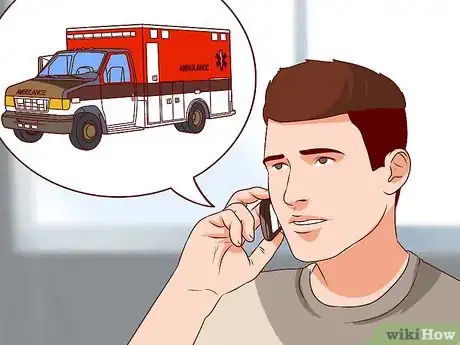

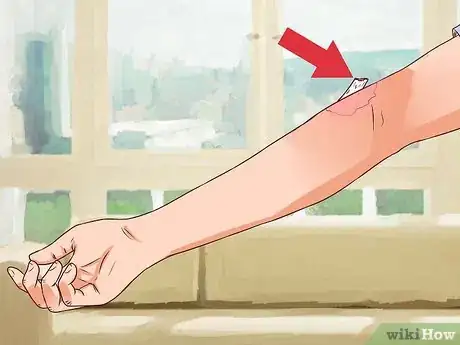

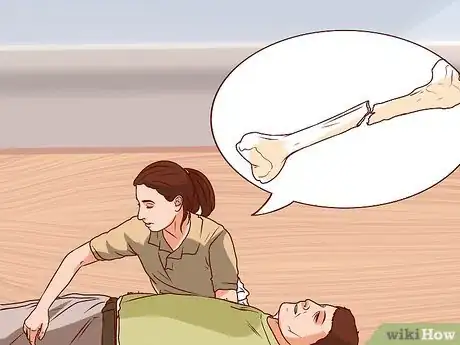
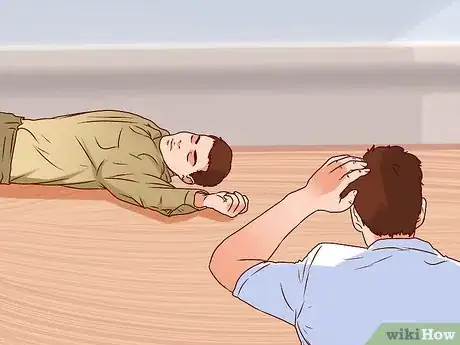
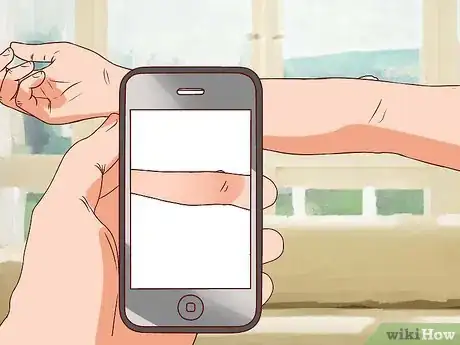


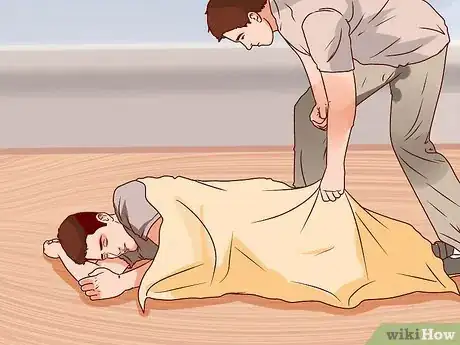
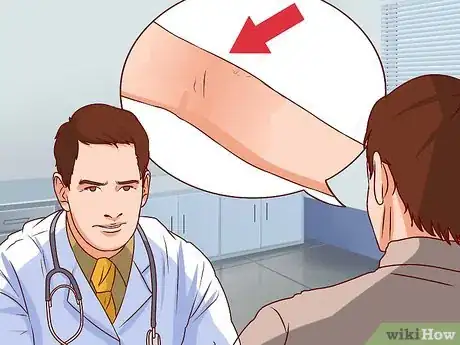
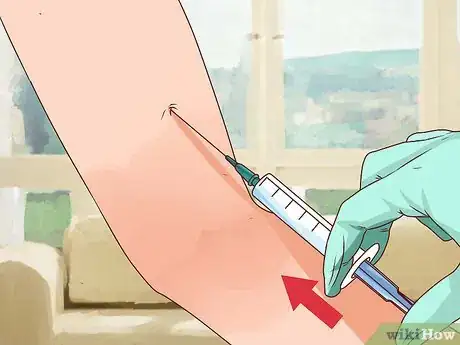
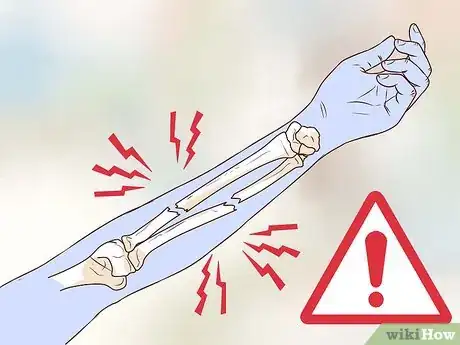
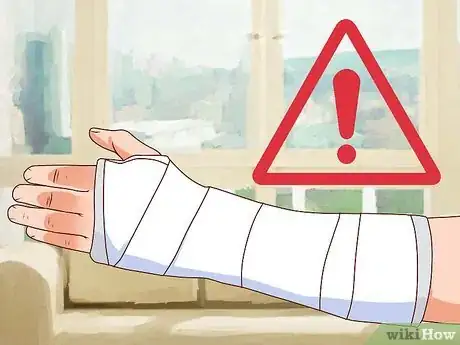
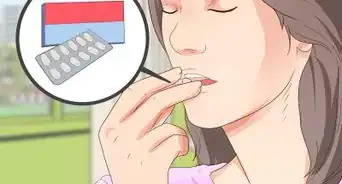




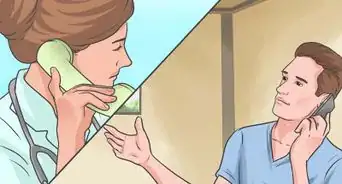
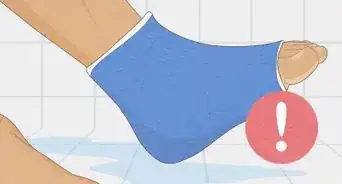
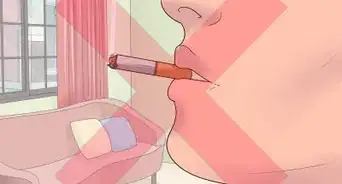

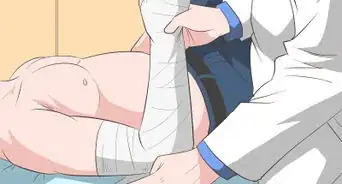
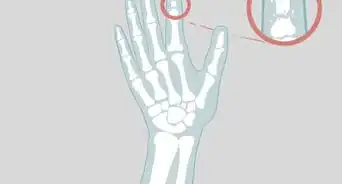

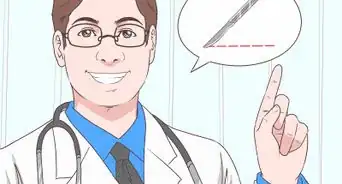















































Medical Disclaimer
The content of this article is not intended to be a substitute for professional medical advice, examination, diagnosis, or treatment. You should always contact your doctor or other qualified healthcare professional before starting, changing, or stopping any kind of health treatment.
Read More...